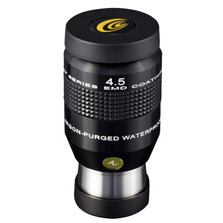The wonders of the solar system have captivated human curiosity for centuries, and modern technology has allowed a deeper dive into the mysteries of neighbouring planets and celestial bodies. Among the many tools in the astronomer’s arsenal, telescopes from brands like Explore Scientific stand out as indispensable instruments for planetary observation. This article will explore the various ways telescopes aid in your exploration of the solar system, from studying the atmospheres of Venus and Mars to tracking the movements of distant asteroids and comets.
The Power of Modern Telescopes
Advancements in telescope technology have revolutionised planetary observation. Modern telescopes come equipped with an array of cutting-edge features, such as adaptive optics and high-resolution imaging capabilities. These enhancements enable astronomers to capture incredibly detailed images of planets and other celestial objects, unveiling new aspects of their composition, atmospheres, and behaviour.
Studying the Atmospheric Dynamics of Venus
Venus, Earth’s scorching sister planet, boasts a thick, turbulent atmosphere dominated by clouds of sulfuric acid. Using specialised telescopes equipped with infrared and ultraviolet filters, astronomers can peer through this thick veil to examine the planet’s surface and atmospheric dynamics. Observations of Venus reveal intriguing details about its super-rotational winds and the peculiar phenomenon known as the “Venusian vortex.” These insights help you understand the complex interactions between its atmosphere and surface.
Unravelling the Mysteries of Mars
Mars, the Red Planet, has long been a target of fascination for astronomers. Telescopes play a crucial role in the continuous monitoring of Mars, allowing scientists to track seasonal changes, study the polar ice caps, and observe dust storms. Modern telescopes also aid in the search for signs of past or present microbial life on Mars, examining the planet’s surface for clues hidden beneath its rusty exterior.
Spotting the Elusive Gas Giants
Jupiter and Saturn, the gas giants of the solar system, are perennial favourites for telescopic observation. Their stunning bands of clouds, massive storms, and iconic rings provide a treasure trove of information for astronomers. Telescopes equipped with advanced imaging techniques allow scientists to monitor the ever-changing dynamics of these giants, including the Great Red Spot on Jupiter and the intricate structures within Saturn’s rings.
Exploring the Icy Moons
Telescopes also enable you to explore the moons of gas giants like Jupiter and Saturn. For instance, the Galilean moons of Jupiter—Io, Europa, Ganymede, and Callisto—hold their mysteries. Telescopic observations have revealed volcanic activity on Io, subsurface oceans on Europa, and the potential for habitable environments beneath the icy surfaces of Ganymede and Callisto. Similar telescopic studies have unveiled the intriguing plumes erupting from Saturn’s moon Enceladus, raising compelling questions about the possibility of life beyond Earth.
Tracking Asteroids and Comets
The solar system is teeming with rocky debris and icy visitors in the form of asteroids and comets. Telescopes are instrumental in monitoring their trajectories and studying their characteristics. By tracking the movement of near-Earth asteroids, astronomers can assess potential impact threats and devise mitigation strategies. Additionally, telescopes equipped with spectroscopic instruments enable the analysis of comet tails, revealing valuable information about their composition and origins.
Searching for Distant Exoplanets
While most telescopes are focused on the solar system, a specialised category known as exoplanet-hunting telescopes extends your gaze to other star systems. These instruments are designed to detect and study planets orbiting distant stars. The data gathered by exoplanet-hunting telescopes have expanded your understanding of planetary systems beyond the solar system, revealing a wide variety of exoplanets with diverse characteristics and potential habitability.
Conclusion
Telescopes from brands like Explore Scientific serve as indispensable tools in your quest to explore and understand the solar system. From unravelling the mysteries of Venus and Mars to tracking asteroids, comets, and distant exoplanets, these powerful instruments continue to provide valuable insights into the cosmos. As technology continues to advance, telescopes will undoubtedly play an increasingly pivotal role in your ongoing exploration of the wonders of the solar system and the broader universe beyond.
























